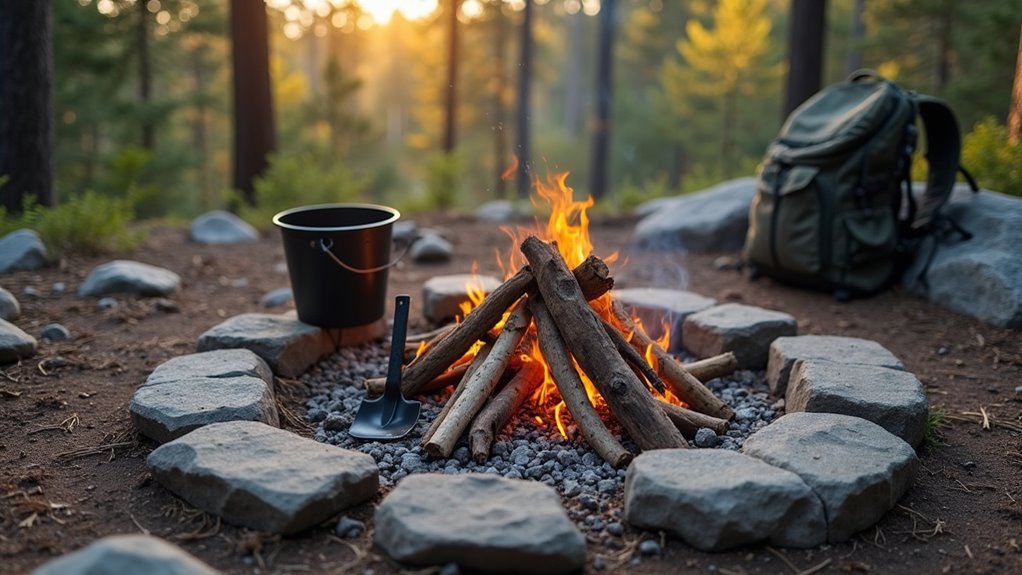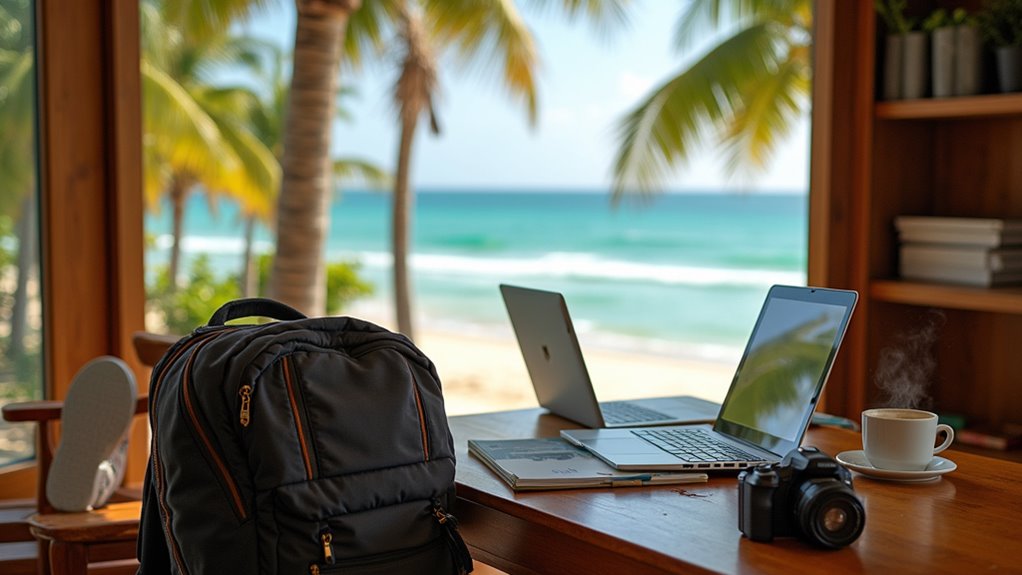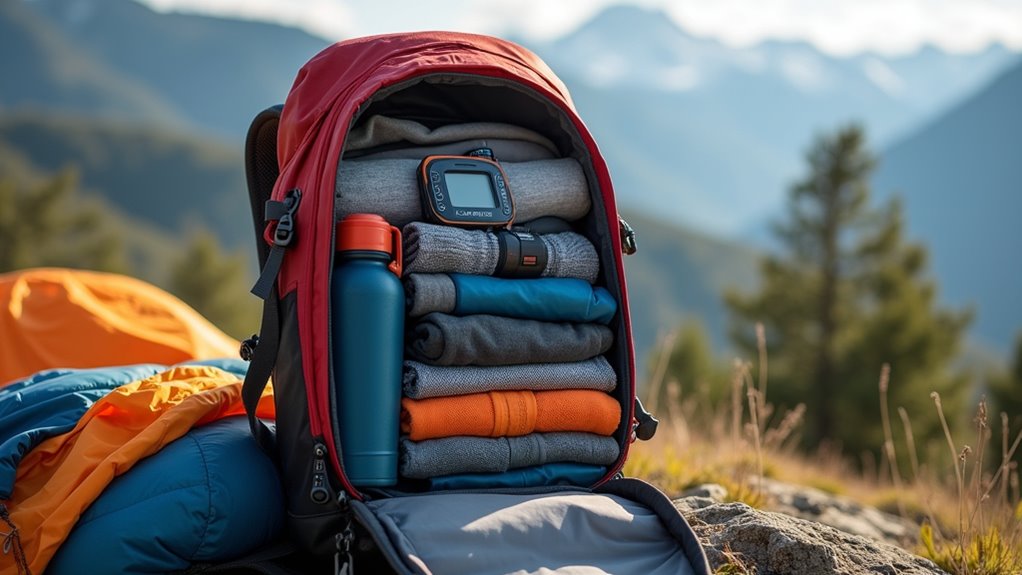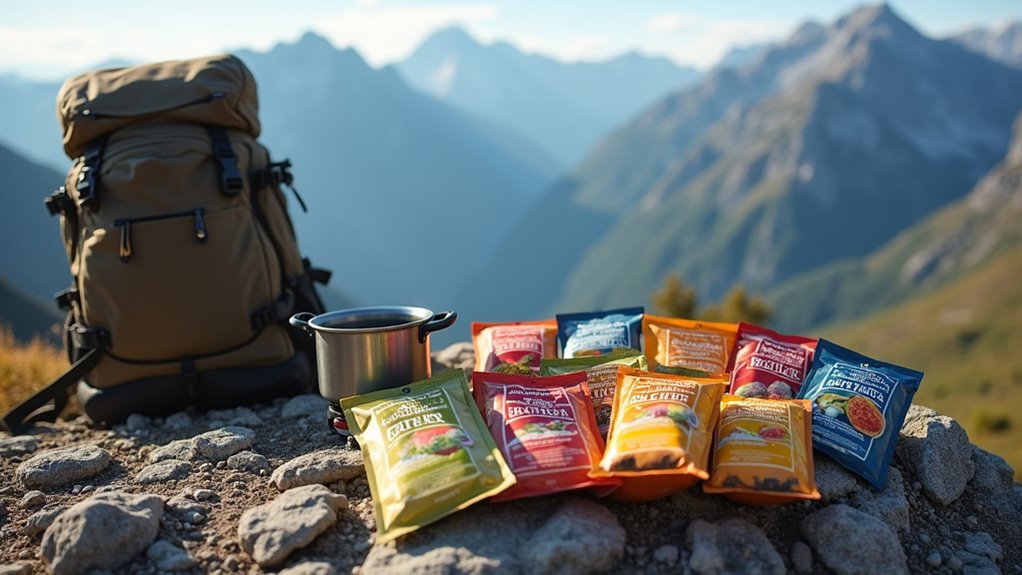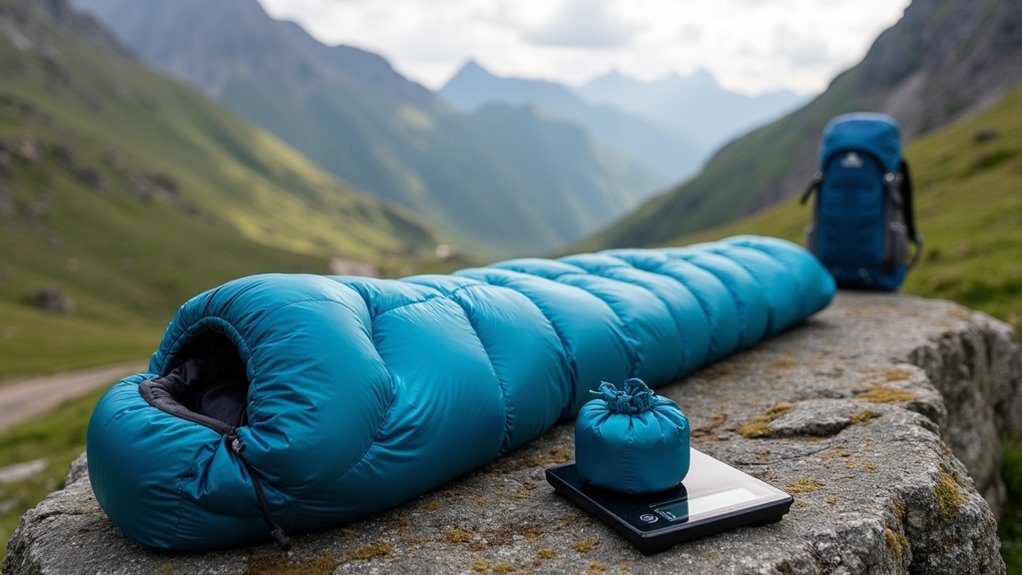To start a campfire safely while backpacking, first check for local fire bans or restrictions, and always use a designated fire ring if one’s available. Clear combustible debris in a ten-foot zone around your site, and gather only dead, dry wood for tinder, kindling, and fuel logs. Build a small tepee or log cabin structure, ignite with waterproof matches, and maintain control by keeping flames under three feet. Never leave the fire unattended; properly extinguish before departure. More practical campfire strategies follow.
Before you strike a match, it’s essential to understand that starting a campfire safely involves careful planning and strict adherence to local regulations. Always check for fire bans or restrictions before you attempt to build a fire, especially during dry conditions that can quickly turn a small flame into a dangerous blaze.
Responsible campfire building begins with checking local fire restrictions and planning ahead to ensure safety for yourself and the environment.
Use only designated fire rings if they’re available, and never rely on makeshift pits, as these increase the risk of fire spread. Clear all debris, leaves, pine needles, and branches within ten feet of the fire ring, creating a buffer zone to prevent accidental ignition of surrounding materials. Before lighting anything, gather a bucket of water and a shovel so you’re prepared to respond immediately if embers escape. Many KOA campgrounds provide fire rings and maintain designated areas to reduce the risk of wildfires and make safe campfire practices easier.
You must also know and respect local firewood policies, as some areas require you to purchase wood locally or prohibit collecting wood from the environment. When permitted, only collect dead and downed wood—never cut live trees, which damages the ecosystem. Gather all three types of wood—tinder, kindling, and fuel—before starting your fire to ensure a steady progression from ignition to a sustained flame.
Separate your wood into tinder (matchstick-sized), kindling (finger-sized), and fuel logs (wrist-sized), prioritizing dry materials like pine needles or birch bark. If you’re faced with wet conditions, commercial wax-based fire starters are effective for igniting damp tinder.
Design your fire structure for safe burning and reliable ignition. Use a platform method by cross-layering base logs for airflow, build a tepee of kindling over a tinder bundle to encourage quick ignition, or create a log cabin stack for a longer-lasting fire.
Always maintain air gaps between wood pieces to prevent suffocation and start with a small flame—keep it under two feet high initially to retain control.
Ignite the fire with a windproof lighter or waterproof matches, lighting the tinder at multiple points for even spread. Blow gently at the base to oxygenate the flames, but never use accelerants like gasoline or kerosene. Monitor wind direction and shield your flame if needed.
Maintain your fire by adding fuel gradually, keeping the flames below three feet, rotating logs with a long poker, and never leaving the fire unattended. Always prepare for emergencies, extinguish thoroughly, and restore the site before leaving.
